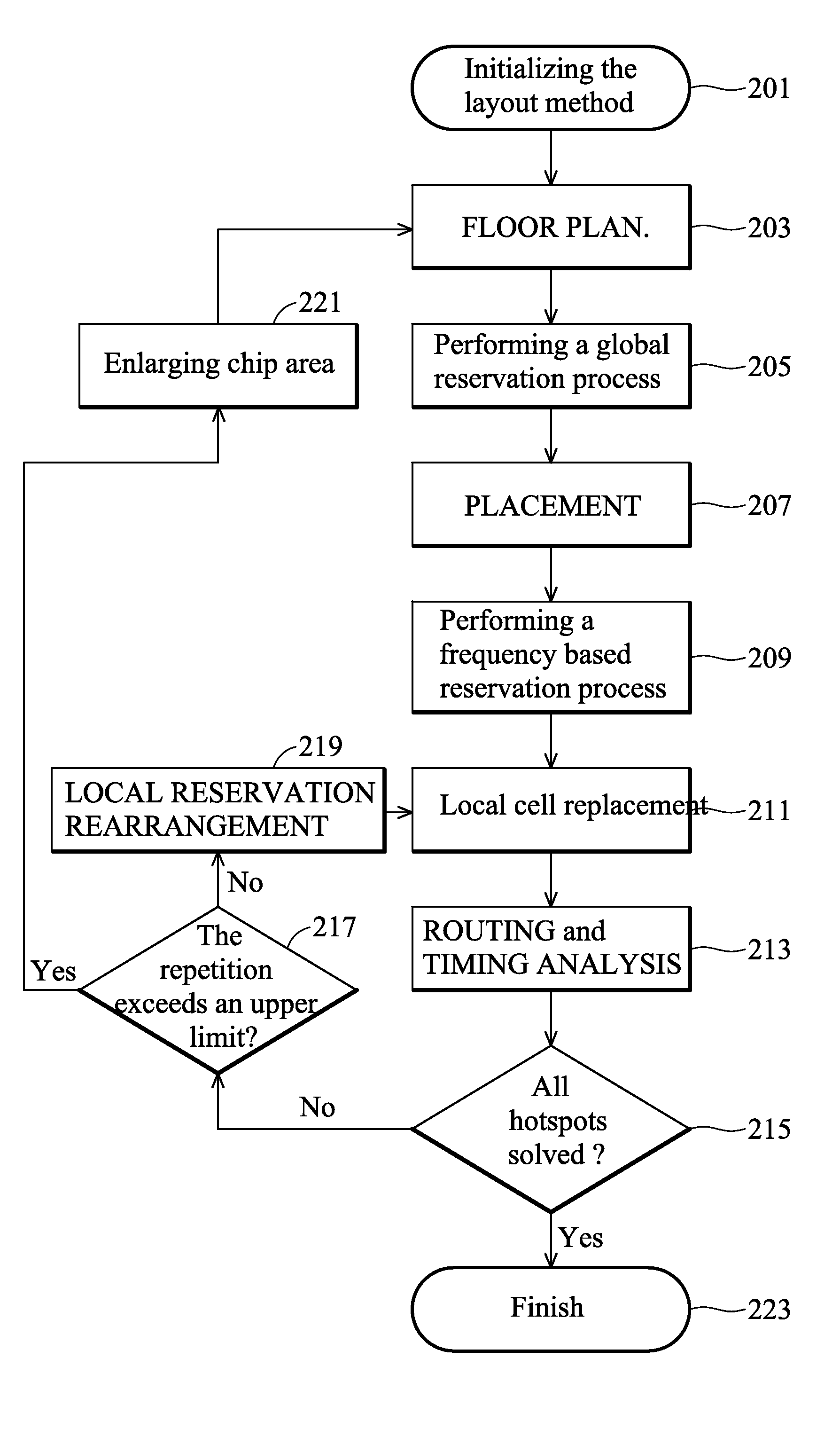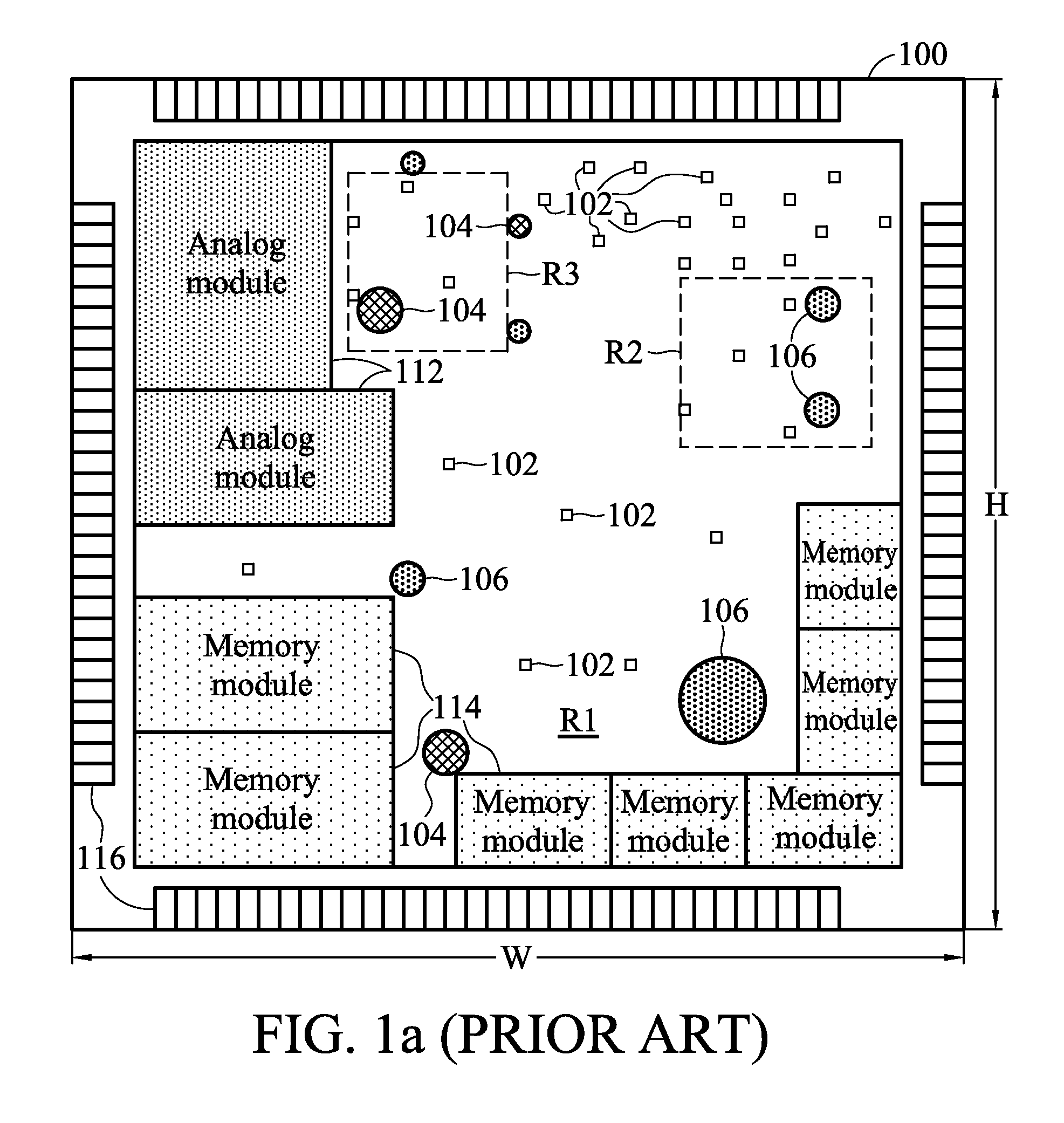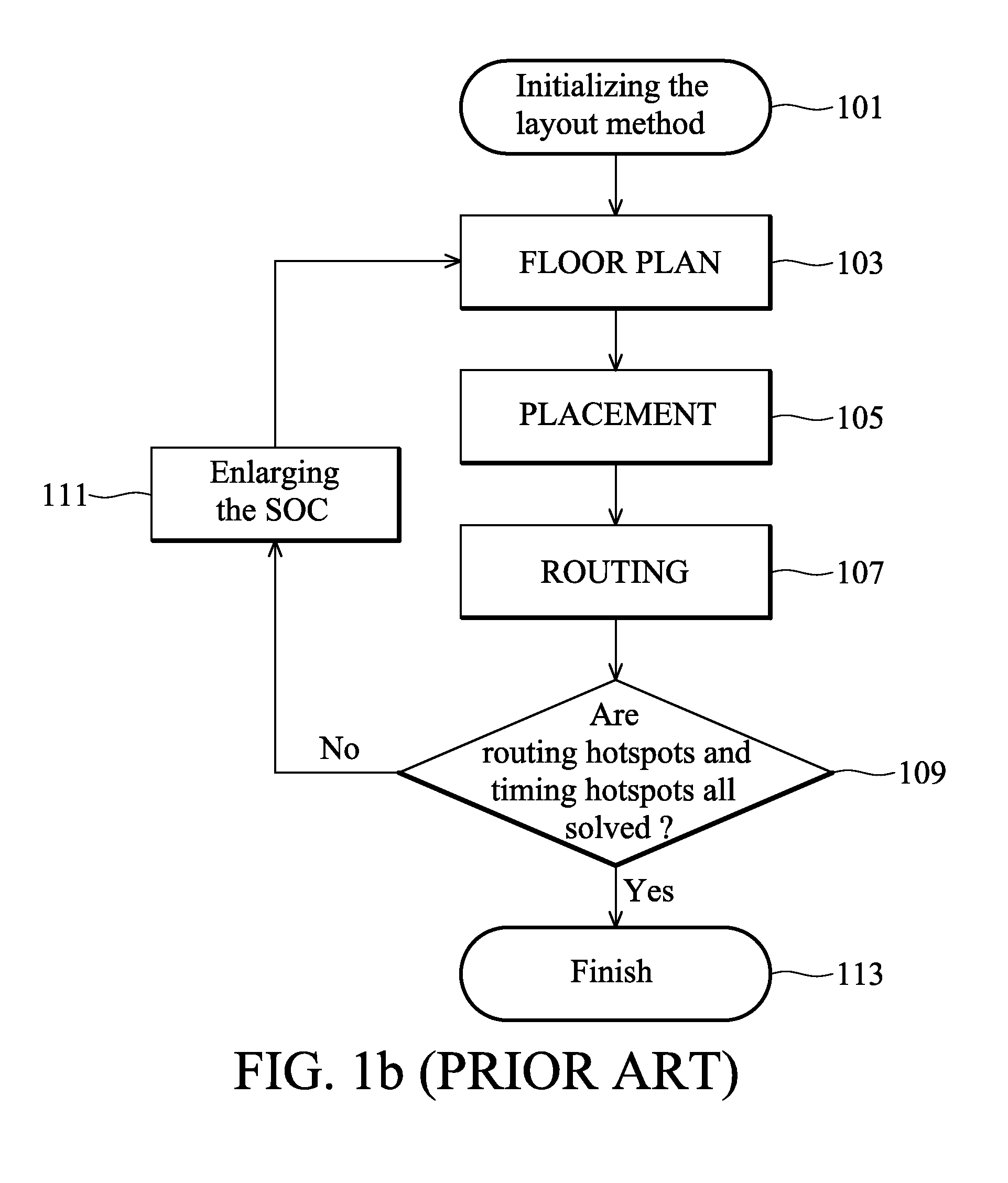Layout Method for a Chip
a chip and layout technology, applied in the field of integrated circuit design, can solve the problems of insufficient routing resources, inability to meet timing criterion, and inducing considerable costs, and achieve the effect of reducing the possibility of hotspots
- Summary
- Abstract
- Description
- Claims
- Application Information
AI Technical Summary
Benefits of technology
Problems solved by technology
Method used
Image
Examples
Embodiment Construction
[0032]The following description is of the best-contemplated mode of carrying out the invention. This description is made for the purpose of illustrating the general principles of the invention and should not be taken in a limiting sense. The scope of the invention is best determined by reference to the appended claims.
[0033]FIG. 2 is a flowchart of a layout method according to an embodiment of the invention. In the invention, an approach for reserving areas is proposed. The reservation deployment is achieved by packaging reserved space into standard cell styles, hereby referred to as room units. Operation frequencies of cells are taken as a basis for distributing the room units, thereby increasing efficiency of a successive routing process, as well as area utilization rate. In step 201, the layout method is initialized. In step 203, a floor plan is performed on the substrate of the SOC, whereby design rules and fundamental structure are defined. The floor plan is a known prior art p...
PUM
 Login to View More
Login to View More Abstract
Description
Claims
Application Information
 Login to View More
Login to View More - R&D
- Intellectual Property
- Life Sciences
- Materials
- Tech Scout
- Unparalleled Data Quality
- Higher Quality Content
- 60% Fewer Hallucinations
Browse by: Latest US Patents, China's latest patents, Technical Efficacy Thesaurus, Application Domain, Technology Topic, Popular Technical Reports.
© 2025 PatSnap. All rights reserved.Legal|Privacy policy|Modern Slavery Act Transparency Statement|Sitemap|About US| Contact US: help@patsnap.com



